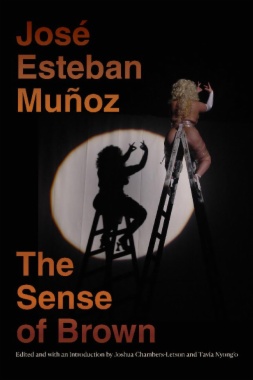The Sense of Brown is José Esteban Muñoz's treatise on brownness and being as well as his most direct address to queer Latinx studies. In this book, which he was completing at the time of his death, Muñoz examines the work of playwrights Ricardo Bracho and Nilo Cruz, artists Nao Bustamante, Isaac Julien, and Tania Bruguera, and singer José Feliciano, among others, arguing for a sense of brownness that is not fixed within the racial and national contours of Latinidad. This sense of brown is not about the individualized brown subject; rather, it demonstrates that for brown peoples, being exists within what Muñoz calls the brown commons—a lifeworld, queer ecology, and form of collectivity. In analyzing minoritarian affect, ethnicity as a structure of feeling, and brown feelings as they emerge in, through, and beside art and performance, Muñoz illustrates how the sense of brown serves as the basis for other ways of knowing and being in the world.
- Cover
- Contents
- Acknowledgments
- Editors’ Introduction: The Aesthetic Resonance of Brown Joshua Chambers-Letson and Tavia Nyong’o
- 1. The Brown Commons
- 2. Feeling Brown: Ethnicity and Affect in Ricardo Bracho’s The Sweetest Hangover (and Other STDs)
- 3. The Onus of Seeing Cuba: Nilo Cruz’s Cubanía
- 4. Meandering South: Isaac Julien and The Long Road to Mazatlán
- 5. “Chico, What Does It Feel Like to Be a Problem?”: The Transmission of Brownness
- 6. The Vulnerability Artist: Nao Bustamante and the Sad Beauty of Reparation
- 7. Queer Theater, Queer Theory: Luis Alfaro’s Cuerpo Politizado
- 8. Performing the Bestiary: Carmelita Tropicana’s With What Ass Does the Cockroach Sit?/Con Qué Culo se Sienta la Cucaracha?
- 9. Performing Greater Cuba: Tania Bruguera and the Burden of Guilt
- 10. Wise Latinas
- 11. Brown Worldings: José Rodríguez-Soltero, Tania Bruguera, and María Irene Fornés
- 12. The Sense of Wildness: The Brown Commons after Paris Burned
- 13. Vitalism’s Afterburn: The Sense of Ana Mendieta
- Notes
- Bibliography
- Index

